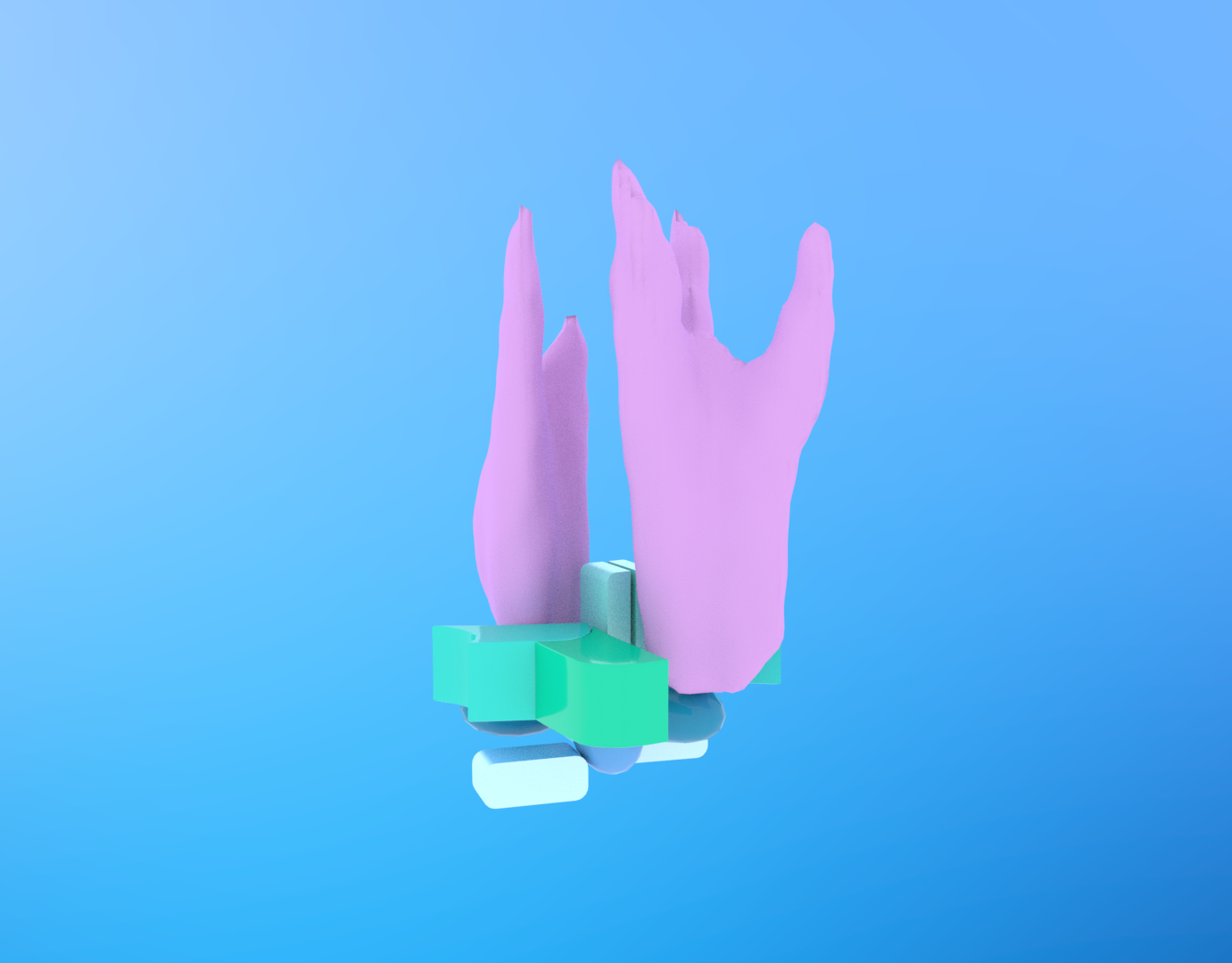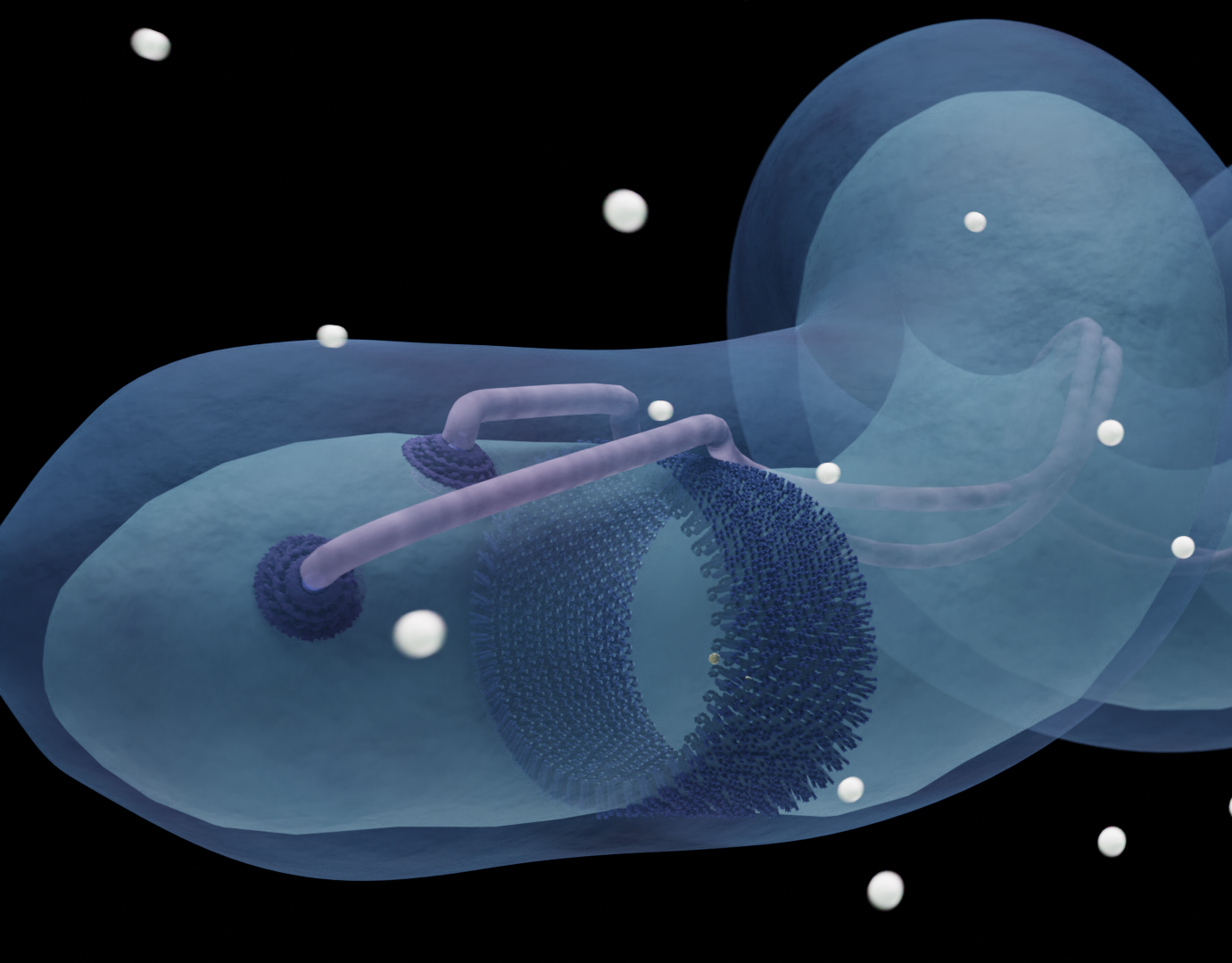This is the second science-based animation on the jumbo myophage ϕKp24. This work was made in collaboration with Ruochen Ouyang and Dr. Ariane Briegel from the Institute of Biology in Leiden. This work accompanies the paper “High-resolution reconstruction of a Jumbo-bacteriophage infecting capsulated bacteria using hyperbranched tail fibers” by Ouyang et al. (2022), as published by Nature Communications.
In this rendition of ϕKp24, also known as a “flowerphage”, the focus is on the molecular structure of the phage’s capsid (the “head” of the phage). The capsid is built up by a lattice of hexamers and pentamers. The capsid has an icosahedral shape with 13 hexamers per facet (260 hexamers in total) and 11 pentamers. (Ouyang et al., 2022) The hexamers are depicted in dark-green, and the pentamers light green/blue.
The sub-units that make up the hexamers and pentamers consist of 3 parts: a “triangular body”, an “arm” and a “hand”. The “hand” of a subunit overlaps the “body” of its clockwise neighbour. The “body” of the hexamer subunits overlap the “body” of its clockwise neighbour as well. In contrast, the “body” of the pentamer subunit, overlap the “body” of its anti-clockwise neighbour. Additionally, the hexamer has a pore in the centre, whereas the pentamer does not (Ouyang et al., 2022).
Fun fact: the animations from this paper are my first published animations :)
Except where otherwise noted this work is protected underhttps://creativecommons.org/licenses/by-nc-nd/4.0/
Hexamer
Pentamer
References:
Ouyang, R., Costa, A.R., Cassidy, C.K. et al. High-resolution reconstruction of a Jumbo-bacteriophage infecting capsulated bacteria using hyperbranched tail fibers. Nat Commun 13, 7241 (2022). https://doi.org/10.1038/s41467-022-34972-5




